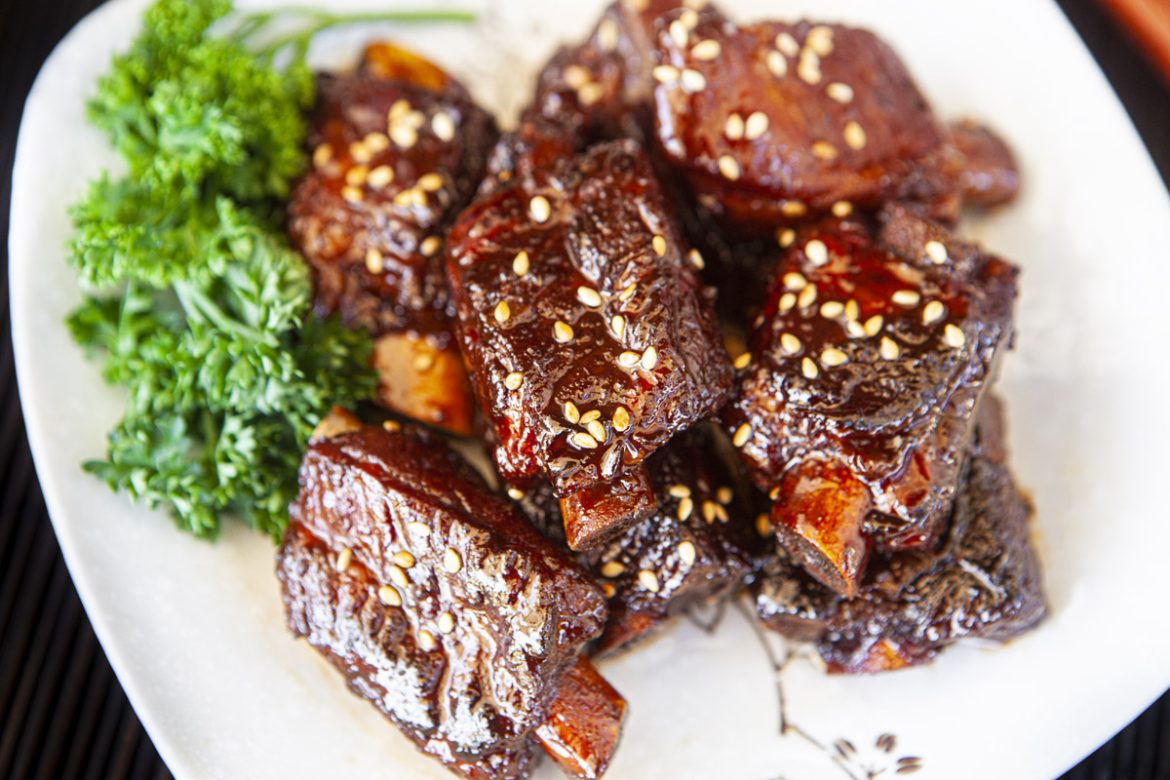In the realm of comfort food, sweet and sour ribs hold a special place, especially within the diverse tapestry of Chinese cuisine. The dish is a harmonious blend of flavors that tantalizes the taste buds and pleases the senses with its vibrant glaze and aromatic presence. Here, we delve into the intricacies of crafting this beloved dish, guided by a tried-and-true ratio and a handful of personalized tweaks that elevate it to perfection.
The allure of sweet and sour ribs lies not only in their taste but also in the simplicity of their creation—a process that is forgiving to novices and open to the seasoned cook’s improvisation. The following recipe is a testament to the beauty of culinary flexibility and the joy of creating a dish that is universally adored.

Ingredients:
- Spare Ribs: 500g
- Rock Sugar (First Addition): 15-20g
- Cooking Wine: 1 tablespoon
- Light Soy Sauce: 2 tablespoons
- Rock Sugar (Second Addition): 3 tablespoons (approximately 45g)
- White Vinegar: 4 tablespoons
- Dark Soy Sauce: 1 teaspoon
- Star Anise: 1 piece
- Bay Leaves: 2 small pieces
- Green Onion Knot: 1
- Ginger Slices: 3
Method:
Begin by thoroughly washing the ribs. In a pot of cold water, bring the ribs to a boil and then remove them, allowing them to drain well. This initial step is essential to ensure the purity of flavor in your final dish.
In a separate pot, combine a suitable amount of oil with the first addition of rock sugar. Heat the mixture over a medium flame until the sugar caramelizes into a rich amber hue. It is crucial to monitor the heat carefully—overcooking the sugar will result in bitterness.
Once the sugar reaches the desired color, add the ribs and toss them quickly to coat them in the caramel. This step not only imparts a beautiful color but also lays the foundation for the depth of flavor that characterizes the dish.
Turn up the heat and sequentially add the cooking wine, light soy sauce, dark soy sauce, the second addition of rock sugar, white vinegar, and ginger slices. Stir the mixture to release the fragrant aromas. If you’re concerned about the sharpness of the vinegar, reserve a tablespoon to add just before the final reduction, adjusting the acidity to your liking.
Prepare the star anise and bay leaves, adding them to the pot along with enough hot water to cover the ribs. Introduce the green onion knot to the mix and let it simmer for 30 minutes on low heat.
After the simmering period, increase the heat to reduce the sauce, concentrating the flavors and creating a sticky glaze that clings to the ribs. The dish is done when it achieves a glossy finish and an irresistible aroma.
To serve, sprinkle toasted sesame seeds and finely chopped green onions over the ribs for an extra layer of texture and a pop of color.

Tips:
- The saltiness of soy sauces varies by brand, so it’s wise to taste the sauce before the final seasoning. Adjust with salt if necessary.
- When caramelizing sugar, patience is key. A low and slow approach is better than rushing and risking a burnt taste.
- Yellow rock sugar is recommended for its superior coloring properties and less intense sweetness.
- Personal taste is paramount—adjust the recipe based on your preference after the initial cooking trial.
- The inclusion of star anise and bay leaves is optional and should be tailored to your taste.
- Remember, the vinegar is added in step 6.
- If using smaller cuts of ribs, a 30-minute cook time should suffice. Adjust the time accordingly for larger pieces, staying flexible.

